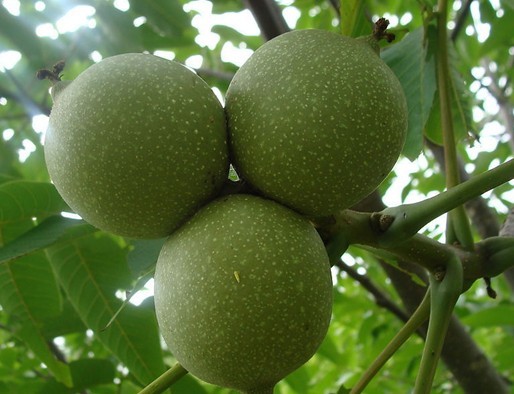As its name suggests, orange rind mainly refers to the dried peel of immature young fruits or the young fruits themselves of Citrus reticulata Blanco or its cultivars. This is a plant in the family of Rutaceae. And other names of it include Green Tangerine Peel, Pericarpium Citri Reticulate Viride, Unripe Tangerine Peel, and so on. In China Qing Pi and Chen Pi are produced in the same places. And medicinally it comes from two forms. The shed premature fruits are usually collected between May and June or the immature fruits are normally harvested from July to August. The former one is dried in the sun as a whole but the latter one needs to be divided into 4 parts that connect only on the base. It is used raw or stir-baked with vinegar.
Citrus reticulata is a small evergreen tree or shrub, 3 to 4 meters in height. Small branches are mostly with thorns. Leaves are alternate; petiole is from 0.5 to 1.5cm in length, and with narrow wing and node at the top; leaf blade is lanceolate or elliptic, 4 to 11cm long, 1.5 to 4cm wide, and with slightly concave acuminate apex, cuneate base, and entire or wavy margin. Flowers are solitary or a few of them cluster on branch top or leaf axils; cup-shaped calyx is 5-lobed; petals are 5 and white or pink; stamens are 15 to 30, of varying lengths, and groups consisting of 3 to 5 filaments; pistil is 1; ovary is round; stigma is cephaloid. Orange fruits are nearly round or flat round, 4 to 7cm in diameter, and with thin and wide rind that is easy to peel off, 7 to 12 segments, and many little sections with juice inside. Oval seeds are white and with one pointed end and the number can be none, a few, or a dozen. Bloom time is from March to April and the fruiting time is from October to December. Main habitats include hills, low mountains, rivers, lakes, and coastal plains.

Orange Rind
ORANGE RIND BENEFITS
Dried ripe orange rind is of warm nature and acrid and bitter taste. It goes to meridians of spleen and lung. It contains more essential oil, which mainly contains limonene, isopropenyltoluene, humulene, hesperidin, coumarin, carotene, cryptoxanthin, vitamin B1, vitamin C, etc. Since it regulates qi, harmonizes middle energizer, eliminates dampness, and transforms phlegm, it is often used for the treatment of fullness in the chest or upper abdomen, no desire to eat or drink, vomiting and hiccup, and a cough accompanied by excessive mucus. Modern pharmacological studies confirmed that hesperidin contained could increase blood flow, resist adrenaline-induced vasoconstriction, dilate coronary artery, act on vascular smooth muscle and lower blood pressure slowly. Besides, coumarin and other active ingredients are anti-inflammatory, anti-ulcer, and cholagogic. As a result it is commonly used for strengthening spleen and promoting the circulation of qi.
Dried green tangerine peel is of slightly warm and bitter-acrid taste. It covers meridians of liver and gallbladder. Its main functions are soothing the liver, relieving stagnant Qi, removing stasis, and dissolving phlegm. Major orange rind uses and indications include chest, rib, and stomach pains, hernia, indigestion, breast swelling, nodule in breast, chronic malaria, and a lump in the abdomen. Compared to the ripe rind, the green one has such a stronger healing power that it can relieve stagnant Qi.
UNRIPE ORANGE RIND RECIPES ON HERBAL REMEDIES
When used in herbal tea, the recommended dosage is from 3 to 10 grams. And it can be also used in powder, pills, extract, and juice.
1. Tian Tai Wu Yao San from Yi Xue Fa Ming (Illuminating the Science of Medicine). It is combined with Wu Yao (Lindera), Xiao Hui Xiang (Fennel Seed), Mu Xiang (Costus), etc. to treat pain due to hernia.
2. Qi Pi Wan from Shen Shi Zun Sheng Shu (Master Shen's Writings on Respecting Life). It is formulated with Shen Qu (Medicated Leaven), Shan Zha (Hawthorn Fruit), Mai Ya (Barley Malt), etc. to cure dyspepsia, qi stagnation, and abdominal pain and bloating.

![Diseases, Symptoms, tcm, [tcmwindow.com]](/uploadFile/adImg/2015/11/11/f5cbfcc0-4df5-4646-9b9a-f316651a0199.jpg)





